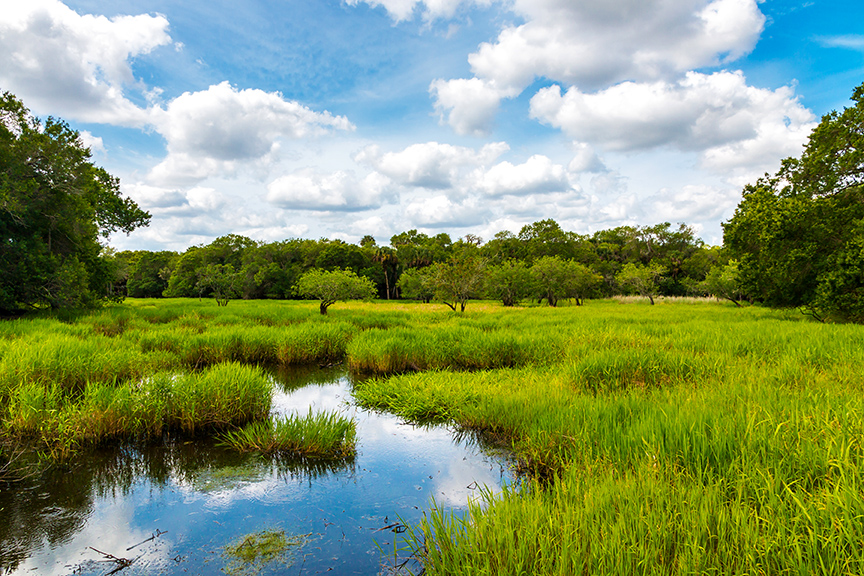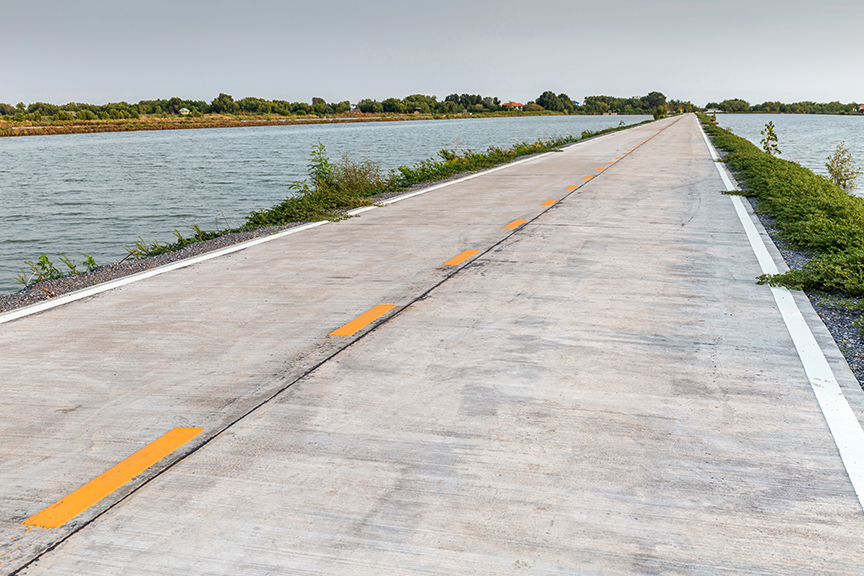What You Need to Know About Section 404 Permitting
If you type “Section 404 of the Clean Water Act” or “Waters of the United States” into an internet browser, you will see a list of links rooted in the U.S. Environmental Protection Agency, U.S. Army Corps of Engineers, and even schools of law. If you proceed down any of these rabbit holes, words such as “regulations,” “jurisdiction,” “permitting,” “mitigation,” and “enforcement” may trigger certain irritabilities.
Continuing on, you’ll probably find regional guidance letters, Supreme Court cases, or a presidential decree to overhaul the rules of the program. In the end, land owners just want to be able to do what they want with a piece of property. But can they get what they want and, at the same time, play by the rules?
There are several regulatory boxes to check—at nationwide, state, and local levels—as one travels from a vacant field to a warehouse or office building, of which Section 404 is one. The regulations may also apply to projects involving utility lines, commercial development, and transportation.
However, Section 404 permitting is often misunderstood, given the complexity of its application and enforcement. The regulations change constantly, either by regular reissuance or court rulings. Whereas playing by the rules suggests a matter of compliance or non-compliance with Section 404, navigation really is the appropriate term of art in guiding clients through the process.
 Wetlands are designated as “waters of the United States” under Section 404. Defining what constitutes a wetland can sometimes be a murky process. (Irina Mos/Shutterstock)
Wetlands are designated as “waters of the United States” under Section 404. Defining what constitutes a wetland can sometimes be a murky process. (Irina Mos/Shutterstock)
Section 404 Defined
USACE, which is separated into regional divisions and then divided into districts within those divisions, must issue a Section 404 permit to authorize the placement of fill material into waters of the United States. The EPA may veto a USACE permit decision, but this rarely happens.
Waters of the United States form the basis of jurisdiction under Section 404. As defined in the Federal Register, waters generally include interstate waters, certain intrastate waters, impoundments of said waters, tributaries, and adjacent wetlands. Features such as stock ponds and drainage ditches are not necessarily included in this list. Although floodplains are likely to contain several of these features, floodplains alone are not regulated under Section 404. Several guidance documents further refine this definition.
What about wetlands? The key is understanding there is a regulatory definition that calls for performing a field assessment of site vegetation, soils, and hydrology. Wetlands often have distinct vegetation, standing water, depressed topography, and a shallow water table. A common misconception is that field results come back as “wetland” because it just rained, or that a site has no wetlands because it is summertime. The field assessment test indicators are indicative of long-term conditions rather than a moment in time. Do not assume the lack of standing water at any given time means the area does not contain wetlands.
Property owners often will use “wetlands” as a convenient catch-all or conversational substitution for waters of the United States. In the context of the regulation, wetlands are distinctly different from a stream, for example. In certain regions, the answer may be that wetlands are absent. However, in the context of Section 404, the box has not been sufficiently checked. Waters of the United States include streams and other features that may be more common than wetlands. It is very common for a property to have streams (a water of the United States), and no wetlands.

Take the Appropriate Steps
If a site does not include waters of the United States, no further consideration under Section 404 is required. Documenting this determination is always recommended, but proof of absence is not required by USACE. If waters of the United States are present, Halff often works with our client to avoid or minimize impacts to these features. If impacts are avoided completely, no further consideration under Section 404 is required. If the project results in impacts to waters of the United States, such as fill material, then a permit is required to authorize the activity.
USACE authorizes activities of a defined nature using specialized nationwide permits for projects that cause minimal impacts. Some nationwide permits, such as those for general development, require a pre-construction notification to and written authorization from USACE before the activity may proceed. In contrast, activities associated with transportation or utilities projects require notification only if certain thresholds are met or exceeded.
Notification to USACE requires a delineation of waters of the United States overlain with the project footprint to evaluate impacts, which for nationwide permits generally cannot exceed a half acre. Because it is a federal action, the notification must also assess the project impacts to federally threatened and endangered species, and cultural resources.
Larger projects require authorization by individual permit. In addition to the requirements of a nationwide permit, individual permits require an evaluation of project alternatives and compensatory mitigation, each of which merits additional attention.
Compensatory Mitigation
The ultimate goal of the Section 404 permitting program is to ensure no net loss of aquatic resources. In the USACE’s Fort Worth District, activities that result in the loss of greater than one-tenth of an acre of waters of the United States or 300 feet of stream bed, compensatory mitigation is required to offset the loss of the resource.
Compensatory mitigation can be accomplished by third-party entities, such as mitigation banks, or conducted by the applicant. Either option may entail additional resources to the permittee, and is often an unexpected and misunderstood additional cost to the project. Projects that fill a substantial amount of stream, wetlands, or other waters of the United States should expect to incur a substantial cost of compensatory mitigation, often in the hundreds of thousands of dollars.
Are you looking for more information about Section 404 permits? Do you need a consultant to walk you through the process? Contact our experts and visit the Environmental Services page.


